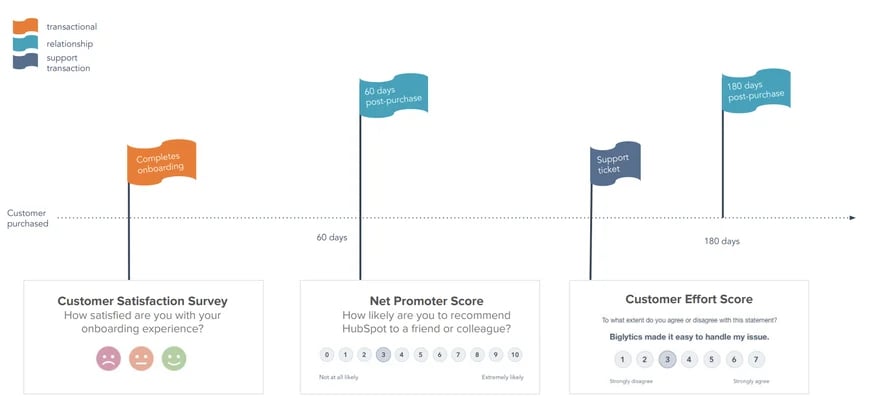Salesforce gets tied together with Customer 360
Salesforce recently came out with an announcement stating that they are now going to provide 360-degree customer insight into their own diversified and fragmented landscape called Salesforce. That's very nice, of course, but a good listener thinks, What The F...? Surely, by definition, that's what a good CRM should meet?
The acquired Salesforce silos are tied together with Customer 360. And rara who should pay for that...
Salesforce recently came out with an announcement in which they indicated that they will now provide 360 degree customer insight across their own diversified and fragmented landscape called Salesforce. This is obviously very nice, but a good listener thinks, What The F...? What's a CRM if it doesn't provide 360-degree customer insight? That is always the promise and intent of a CRM system, isn't it? How far has leading Salesforce strayed that they now use phrases like this one:
"Customer 360 represents a fundamental commitment on the part of Salesforce - including marketing, sales, service, and commerce - to provide a unified customer profile that can be used across our customers' organizations."
Or this one:
"With Customer 360 we promised to deliver a unified ID. With it, companies can easily connect and resolve customer data across their various Salesforce apps. "
In short, Salesforce has developed its own CRM shell for the complex landscape that Salesforce has become. I may be a bit cynical and sarcastic in my tone, but in my view it is justified. I quite often visit companies that have been expertly sewn into the Salesforce suit. That went, in principle very enthusiastically and well with the use of Salesforce in e.g. 2009. Back then, Salesforce was indeed a breath of fresh air and a unicorn. The convenience of a CRM in the cloud which could be delivered as customization. That was top notch.
Shareholder value or customer value
But as is often the case with successful companies, they get bigger quickly and helping customers is no longer the primary task. It is, however, growing shareholder value. And growth you achieve roughly in three ways:
- You sell to more customers
- You sell more to existing customers
- You buy new customers by acquiring companies.
All three of these strategies are employed by Salesforce - and, in the view of shareholders, very successfully given Salesforce's share price performance.
Salesforce also posted record figures for the first quarter of 2019. Revenue reached $3.74 billion. An increase of 24 percent from a year earlier. Subscription and support revenues were $3.5 billion, up 24 percent year over year. Geographically, Salesforce saw revenue growth of 25 percent in the Americas (70 percent of total revenue), 27 percent in the Asia-Pacific region (10 percent of total revenue) and 32 percent in Europe (20 percent of total revenue). In short, that's fine from the shareholders' perspective. But what is it like for Salesforce's customers?
Customer perspective or customer perspective
I predict that Salesforce is going to end up footing the bill for this rapid and structured growth. In my view, there are a number of reasons for this:
- Customer centricity and practice what you preach
In all marketing and sales statements that Salesforce unleashes on the market, the customer is central. You cannot read five sentences in a row where the word customer does not appear.
"Reach your customers in a whole new way with the world's best CRM platform."
"Our customers' success is our success."
"Solutions that help you find, win and retain customers."
Of course, these are fine promises, facts and opinions. Great. However, the question is whether Salesforce can live up to these self-proclaimed slogans for its own customers and specifically at what (high) cost. Technically speaking, nowhere else in the world is there such a large and comprehensive box of tricks in the field of marketing, sales and service as that of Salesforce.
And they have done quite a bit of work on that as well given the acquisitions they have made over the past 10 years. For more than $30 billion, they have bought up more than 60 companies here and there. And we are not talking about small companies with 10-15 FTEs, but large companies with hundreds of employees, countless products, services and technologies. These companies already had their own profitable business model or were well on their way to it. Salesforce got wind of this sometime during the execution of their strategy and thus further rigged the already overflowing Salesforce Christmas tree. As a result, many Salesforce customers now have one of those very expensive, oversized, attention-demanding Christmas trees in their homes. And the worst part is that it is no longer there for two weeks, but all year long. That Christmas tree, even if it's pretty lights, regularly gets in the way quite a bit.
With that, they've come to resemble something they used to be so vehement about: a technology juggernaut. Nice to quote an excerpt from an interview with then SF EMEA marketing manager Woodson Martin at Dreamforce 2008 in San Francisco (from Computable):
Martin has a lot of criticism of traditional software vendors. "The business environment is changing at lightning speed. Chief information officers want to innovate as much and as fast as possible to stay ahead. This requires agility and flexibility," Martin said. According to him, these are two characteristics that traditional software vendors such as SAP, Oracle and Microsoft lack. Agility is the ability to adjust a process quickly and efficiently in the interim. He does not hide his disdain for the competition. "Our competitors' products are expensive, inefficient and outdated. They say that delivering custom software is difficult and that standard solutions are the answer and fit their customers' needs. That's nonsense. Customization is precisely the core of business. It is the main thing that allows organizations to differentiate themselves from their competitors. But traditional software vendors lose interest in their customers as soon as the contract is signed."
The trend of Agile, which surfaced sometime during that time was fully embraced by executives. Nothing wrong with that, but what if due to your growth and complexity you yourself have now degenerated into a juggernaut and your distinctiveness no longer comes from being able to deliver customized solutions, but from being expensive, inefficient and outdated, to paraphrase their own words. In short, they have become what they used to be so opposed to (even though they will deny and disguise this with rambling marketing language).
And that brings me to point two. The inflexible, inefficient Christmas tree that Salesforce has become.

- Salesforce Architecture or expensive.
A bland but better wording here would also be Salesforce Architect Expensive. This is because just about everything can be done with Salesforce, but that "everything" comes at a price. Do the math:
Suppose you are responsible for a manufacturing company with about 200 employees with sales of 60 million and you start working with Salesforce. We then start with the primary functions around Sales and Service. The Sales department (8 account managers, 4 inside sales people) and the service department (4 service engineers + coordinator) come out on the Salesforce package: Sales and Service for €175 per month. Including management that comes out to 25 people à €175,- is €4375,- per month. After a while there is a need for more analysis capabilities (on the recommendation of an external consultant, who is also quite expensive by the way, but more about that later) so Sales Cloud Einstein is purchased for €50,- p/m for 5 users. After six months it is the marketing department's turn because they need marketing automation, mailings,customer journey tracking and whatnot. They purchase Salesforce's most chosen marketing solution for this: The Marketing Cloud Plus for €2500 per month. All the new information gathered by marketing, sales and service creates a great need to unlock information through an app built with the Lightning Platform Plus at €100 to 50 people.
They also purchase the employee app for all 200 employees at €25 per month. Added up, we then get the receipt below (to be paid off per month):
25 x 175,- = 4375,-
5 x 50,- = 250,-
1 x 2500,- = 2500,-
50 x 100,- = 5000,-
200 x 25,- = 5000,-
Total per month: €17,125,-
With a little discount deducted we arrive at €15,000 per month. And this is just the monthly price of the software. A rule of thumb that many software vendors use is that the market around the service is 3 to 10 times larger. So certainly count on double the amount for the first 2 years. Added to this is the fact that scarcity has developed around Salesforce expertise. Amounts from €150 per hour for a Salesforce partner consultant are the rule rather than the exception. In short, count on at least €200,000 in support from a partner in the first two years. So all in all, in two years you will have lost over 4 tons of out of pocket money. And every month the amount of €15,000 keeps on coming and, given the Salesforce Christmas tree (which, according to salesforce, is far from full), it certainly won't get any less. So a question you have to ask yourself as a straightforward entrepreneur or manager is: aren't there any alternatives?
- What's the alternative?
A common term I still often encounter is the term "lock in. If we work with software x, y or z do we have a lock in? Let me help everyone out of the dream. You always have a lock-in. Whether it's the location you're in (moving a plant/office is costly), employees you hire, or software that supports your primary processes. You can't escape it. You don't have to, provided you don't become too dependent on your supplier, so they can put everything before you and you have to swallow it because there is no alternative. At least you think so.
Now there is some time, again an American company, which has taken a good look at Salesforce, but even more at the customer in the 21st century and what they want. I'm talking here aboutHubSpot. HubSpot was founded in 2005 by 2 MIT graduates, Dharmesh Shah and Brian Halligan. They saw a world where the way of purchasing products and services was changing dramatically. Out of this shift, a company was born: HubSpot. It is based on "inbound. The idea that people do not want to be bothered by marketers or harassed by salespeople, but want to be helped substantively with their issue/problem. Today, the inbound movement is empowering companies to best help customers in their search. This requires a return to the customer, which is ultimately what it is all about.
The HubSpot platform was created from this philosophy. HubSpot is known to many marketers as the leadingMarketing Automation system, however, in doing so we are doing HubSpot a serious disservice.HubSpot has experienced significant growth over the past few years. Thanks to substantial investments in R&D (over $180 million over the past 2 years), HubSpot CRM has now become a full-fledged CRM - and even more than that. With all of its functionality, it targets employees working in marketing, sales and/or service functions. In short, at functions where you are in direct contact with customers, whether that is an existing customer or one you have yet to acquire. HubSpot gives you 360-degree customer insight from whatever commercial silo you act from. How your organization is organized or what systems you work with no longer gets in the way of that.
So what makes HubSpot different from Salesforce?
Salesforce has long since ceased to be a single product as stated above, but a collection of products sold with a bow around it as Salesforce. That's where HubSpot does things substantially differently. HubSpot starts from its own system architecture that is developed and developed further by more than 300 developers (2800 employees in total) every day. Look closely at HubSpot's logo. It is a ring with three other small rings attached to it. Any IT professional knows that this communicates a service-oriented architecture. Something that allows you to remain flexible, scalable and agile as a company.
And yes, HubSpot also sometimes takes over a company for specific knowledge and expertise (Motion AI), but unlike Salesforce, they then integrate this 100% into the already existing platform.
As mentioned above, the architecture and, as a result, the user-friendliness of HubSpot for normal "people" (read the end users) is many times simpler, more practical and therefore more efficient. HubSpot doesn't say that itself but you can find this in more than 10,000 reviews from 'real' commercial professionals as below for example.
- https://www.g2.com/products/hubspot/reviews
- https://www.capterra.nl/software/152373/hubspot-crm
- https://www.gartner.com/reviews/market/crm-lead-management/vendor/hubspot/product/hubspot
You get a lot done faster and without the intervention of expensive consultants and countless consultations in a short time. Gone are difficult and costly operations and integrations. HubSpot has always focused heavily on connectivity from the outset, since they too have more than 300 standard integrations, so that integrations are usually done in three clicks and a few minutes.
Because HubSpot is also at least 10 times smaller than Salesforce in terms of size, it is more agile as a company and suffers far less from the law of the inhibiting lead that Salesforce is now up against (although Salesforce's marketing machine will claim the opposite). HubSpot itself is becoming increasingly aware of this and is slowly daring to step out of the shadow of its great example Salesforce. It even dares to launch an attack according to this article that recently appeared on the renowned platform Techzine.
Customer 360 by Salesforce is a clever attempt by Salesforce to disguise the law of the inhibiting lead. However, don't be fooled and look further than the magnificent Salesforce HQ tower in San Francisco is high.
Want to know more about the impact of HubSpot's journey from marketing app to fully integrated platform - And what that means for you as a marketer, sales or service expert? We'd love to help.

Want to get the most out of HubSpot? Subscribe to our newsletter, follow us on LinkedIn, or attend our HubSpot User Days!
Explore HubSpot User DaysShare this
You May Also Like
These Related Stories

HubSpot is not a Marketing Automation Tool

End friction in your commercial process with HubSpot

